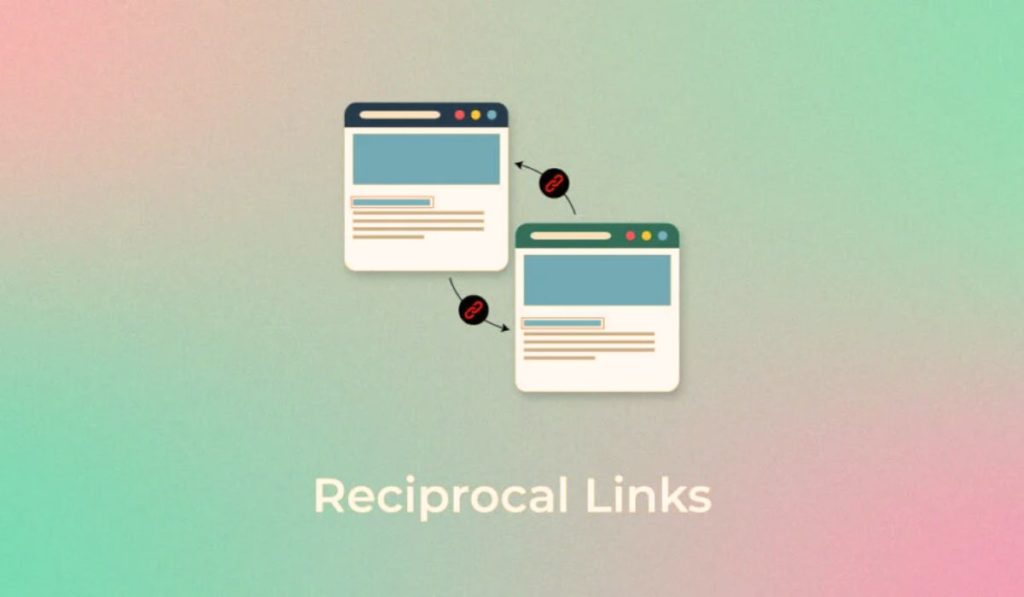Search engine optimization (SEO) refers to the process of improving a website’s visibility in organic search engine results. As more people turn to search engines like Google to find information online, businesses and organizations want their websites to appear higher in the results for relevant keyword searches. Higher visibility leads to increased traffic and potential conversions for the site. As such, SEO has become a vital component of digital marketing strategies in the modern era.
One common SEO tactic involves building high-quality backlinks, which are links from external sites pointing back to a webpage. Reciprocal links refer to an arrangement where two websites agree to link to each other, typically to mutually benefit one another’s search rankings. While reciprocal links used to be a popular link building technique, major search engines like Google now frown upon them as an attempt to manipulate rankings.
Google’s algorithms aim to surface pages based on relevance and quality rather than reciprocal relationships. While exchanging links may still provide small SEO value, focus has shifted more to earning links organically by producing high-quality content.
Understanding Reciprocal Links

A reciprocal link refers to a type of backlink arrangement where two websites agree to link back to one another. Website A places a link pointing to Website B on one of its pages, and in exchange Website B links back to Website A. These type of “you scratch my back, I’ll scratch yours” deals aim to provide search engine optimization benefits for both sites.
In the early days of SEO, reciprocal linking was a common tactic. Webmasters manual exchanged links, often in large reciprocal linking networks involving sometimes hundreds of websites. The premise was that by rapidly building an interconnected web of sites all pointing to one another, it would artificially inflate everyone’s search rankings.
There are a few types of reciprocal links:
Natural reciprocal links develop organically when two sites that have related content discover value in linking to the other. For example, two blogs writing about environmental issues may reference one another in relevant posts. These natural links are viewed positively by search engines.
Artificial reciprocal links are manually exchange solely for SEO benefits, without sites having common themes or complementary content. Large networks of sites were created just to trade links.
Paid reciprocal links involve websites paying to place links on other sites and vice versa. These paid links violate search engine guidelines.
While reciprocal links used to be a mainstay practice in SEO, search engines like Google have cracked down on artificial attempts to trade links just to manipulate PageRank and rankings. Natural reciprocal links between sites can still benefit SEO, but artificial link exchanges are at best minimized and at worst penalized.
The Impact of Reciprocal Links on SEO
Reciprocal Links and Search Engine Rankings

Reciprocal links were once considered an easy shortcut to improving search engine rankings. The logic was that by rapidly trading links with other websites, the cumulative effect would be that each site’s ranking signals get a boost through the additional backlinks and distribution of link equity.
Link equity refers to the ranking power a webpage holds based on its backlinks. When Site A links to Site B, it passes some of its own equity to Site B. This equity then flows across the link, signaling to search engines that Site B offers valuable content. Link equity forms the basis of Google’s original PageRank algorithm.
In a reciprocal link agreement, two sites pass equity between each other. If Website A links out to 100 sites but has 90 of those sites linking back, it would accumulate more equity and rankings potential than Website B with the same outbound links but only one site linking back. By trading links, both sites attempt to accumulate equity faster.
Google’s View on Reciprocal Links
As reciprocal links became a popular SEO tactic, Google began viewing many reciprocal linking arrangements as a form of manipulation. Link networks and groups were created solely to trade links rather than websites naturally linking to related quality content.
Google released guidelines stating reciprocal links should occur naturally and be relevant for users. Any attempts to artificially trade links is considered a violation of its policies. Signs a site’s reciprocal links are questionable include:
- Large-scale networks exchanging links
- Websites with no related content or value for users linking together
- Offering money or payments to place links on other sites
Penalties can include demotion of rankings, inability to rank for important keywords, or even removal from Google’s index. Recent updates have incorporated more sophisticated analysis of linking patterns to identify unnatural reciprocal arrangements leading to penalties.
The SEO community recognizes that while small-scale reciprocal link arrangements can still benefit sites if kept reasonable, the days of artificially inflating search rankings through mass-scale link exchanges are over. Natural links originating more organically tend to become the focus of modern SEO strategies.
Pros and Cons of Reciprocal Linking
Pros of Reciprocal Linking
While large-scale reciprocal link networks are ill-advised today, small-scale reciprocal arrangements still offer some potential benefits, including:
- Network Building – Manually reaching out to related sites to exchange links can help webmasters build relationships. These contacts may share content, link to future posts or collaborate together over time. Links are merely the initial introduction.
- Referral Traffic – Quality sites linking back and forth can send visitors to check out the other site based on the links. Even a small boost in referral traffic from a strong site’s audience can be valuable alongside any indirect SEO perks.
Cons and Risks
Reciprocal links also come with a few disadvantages to consider:
- Penalties – Getting caught in an overt reciprocal link scheme can lead to search engine penalties against all sites involved. Excessively trading links for SEO comes across as manipulative to Google.
- Link Schemes – Too many inbound links from largely unrelated sites looks suspicious. This can hint that a deliberate linking network is in place mainly for rankings benefits rather than genuine endorsement of content.
- Negative SEO – Sites have been attacked by rivals using negative SEO tactics that involve building sketchy reciprocal links pointing to their website without permission. This can spur penalties.
- Irrelevant Sites – Linking out to unrelated sites just to get links in return provides no value for users. Irrelevant sites essentially waste opportunities for better links.
- Management Difficulties – Keeping track of reciprocal arrangements and ensuring all sites uphold their end can become burdensome. Failure to maintain reciprocity leads to lost links/equity.
In summary, while limited reciprocal link building with strong relevant sites in a contributor’s niche may indirectly help rankings, networks involving mass link exchanges often cause more harm than good in modern SEO. Moderation matters most when leveraging reciprocal links so they appear natural. Prioritizing organic linking opportunities based on producing high-value content tends to be preferable over attempts to engineer reciprocal links devoid of relevance.
Best Practices for Reciprocal Linking
The key to benefiting from reciprocal links in SEO without risks is being selective about partners and emphasizing relevance over quantity. Strategies include:
- Choosing Strong Partners
Seek out sites with authority and influence in your niche. Prioritize sites with high domain ratings and organic search traffic over weaker sites desperate for links. These influential partners pass more equity and visitors.
- Vetting Content Relevance
Reciprocal partners should have topically relevant content and audiences interested in both sites. Seek thought leaders producing high-value resources aligned to your site’s focus. Irrelevant sites should be avoided.
- Limiting Link Volumes
Keep reciprocal links reasonable in number. Excessively trading links comes across as manipulative. Slowly building a selective portfolio of partners has more value than a sudden deluge of reciprocal links.
- Using Logo Links
Place reciprocal links as small logo text links rather than overoptimized anchor text links. This looks more natural and innocent to search engines.
- Monitoring Performance
Check analytics to identify traffic volumes from reciprocal partners. Suspend any underperforming links wasting valuable homepage real estate with poor conversion results. Assess if equity-passthrough helps rankings for important terms.
- Maintaining Communication
Proactively notify partners of new relevant content to potentially link to over time. Also reach out if their site structure changes to ensure links remain intact and active. Seek new opportunities to swap links to fresh content.
- Pruning Irrelevant Links
Review reciprocal links routinely to suspend any relationships where sites have shifted focus away from original agreed-upon themes. Redirect to higher-quality connects.
By focusing on relevance, quality over quantity, performance, and relationship management, SEOs can incorporate reciprocal links cautiously as part of an integrated inbound linking strategy while avoiding risks of penalties from mass low-quality link exchanges.
Reciprocal Links vs. Other Link Building Strategies
Reciprocal linking represents just one approach to securing backlinks for SEO value among other methods like:
- Guest Blogging: Publishing articles on authority sites within your niche typically provides dofollow backlinks from reputable domains. Bonus is added exposure to new audiences. More scalable than reciprocals.
- Broken Link Building: Identifying broken pages on strong sites that earn lots of organic traffic allows you to contact webmasters requesting they link to your related content as a replacement resource for visitors. High value.
- Link Insertions: Leveraging brand mentions or expert quotes in existing pages on sites drives contextual backlinks at marginal effort compared to creating new guest posts.
When evaluating the place of reciprocal linking within modern SEO strategies, consider these factors:
- Scale: Reciprocals build slowly through manual outreach compared to other tactics but with selectivity and relevance. Guest posting and broken links building tend to surface opportunities faster through dedicated outreach.
- Risk Profile: Reciprocals carry moderately high penalty risks around manipulation given their swapped nature. Other tactics based on genuine value provision are far less risky.
- Control: Reciprocals require cooperation of partners to uphold over time. With guest posts, you better control anchor text and link durability assuming no major site changes.
Overall, selective reciprocal linking has a place for discovering synergistic partner sites and earning incremental links in addition to other efforts. A balanced link building approach is ideal. Kick off searching for strong reciprocal opportunities in the initial discovery and relationship building phases of executing your SEO strategy. Treat reciprocals as supplemental long-term link earning sources while scaling guest posting, outreach, content production, and other tactics to comprise 80%+ of your link acquisition channels based on priorities.
Conclusion
In summary, reciprocal linking was once a core SEO tactic but now plays a more nuanced role given modern search engine algorithm updates. While large-scale reciprocal link networks are rightfully frowned upon and penalized for manipulation, small-scale reciprocal links with truly relevant sites can still benefit search rankings along with referral traffic. The keys are emphasizing selectivity over quantity, monitoring ongoing value, and focusing on strong content-based relationships over artificial links.
The role of reciprocal links has evolved, but they still warrant consideration as part of a balanced, risk-aware SEO linking methodology centered on quality over quantity.

